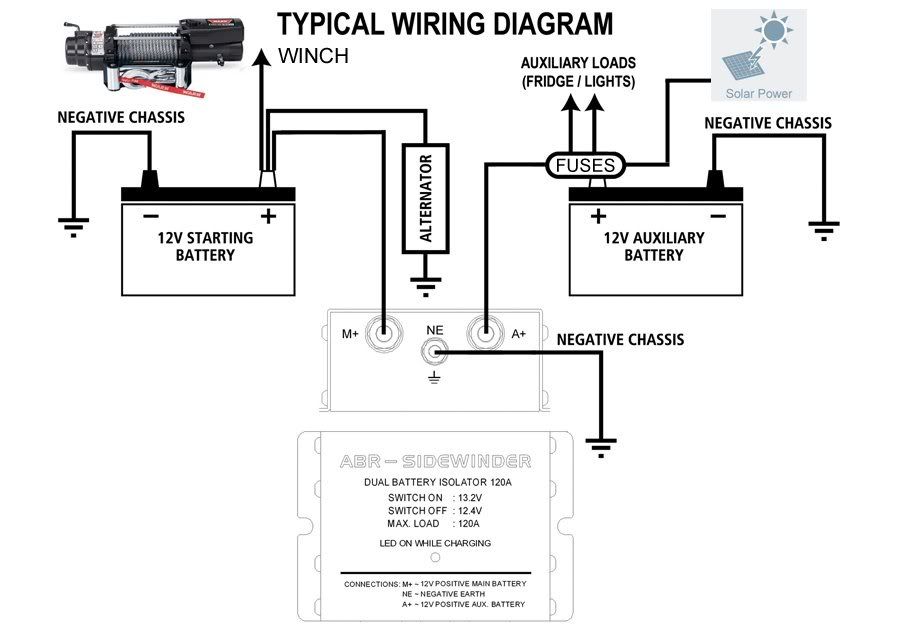


Following up on last week’s newsletter covering the continuous duty solenoid we look at ‘Smart’ Isolators.
This type of isolator has many names like ‘Electronic’, ‘Smart’, ‘Automatic’, ‘Intelligent’, ‘Micro Processor’ and ‘VSR’. Basically they are all a type of ‘VSR’ – Voltage Sensing Relay. Some may be solid state meaning the relays are not mechanical but rather an electronic switch that has no moving parts but these normally require large heat sinks to dissipate the heat generated and as such are about twice the size of a ‘VSR’ with mechanical relays, as technology improves we hope to see these get smaller and more efficient with smaller heat sinks.
What is in the ‘VSR’ ?
a) Most if not all ‘VSR’s have spike protection that protect the vehicles electronics as the isolator connects or disconnects the charging circuit.
b) All ‘VSR’s have a voltage sensing circuit, this circuit senses the main battery voltage. When the engine is started and the main battery charges up, the voltage will increase to a point that the battery is close to fully charged. This is where the voltage sensing circuit will activate the relays and bring the auxillary battery into the charge circuit. At this point the two batteries are joined in parallel and charge as one battery. The battery with the lowest charge will accept more charge initially and once they are at a similar capacity they will charge together. The charge is regulated by the cars own regulator fitted to the alternator which is typically 13.6V to 13.8V when the engine is at full operating temperature. Once the engine is turned off or the main battery drops below the low sense voltage the ‘VSR’ will disconnect the circuit. This typically happens at approx 12.5V.
c) All ‘VSR’s have relays, these will be solenoid type, standard relay or solid state.
d) Some ‘VSR’s will have an override function or forced parallel for emergency charging or possibly even to start the car on the auxillary battery if the main battery has failed. This function if available should be used with extreme caution as the high current required to start an engine can damage all of the above types of ‘VSR’s. The damage is not visible to the owner as it occurs inside the ‘VSR’ on the contacts of the relays, this shows as pitting and arcing and causes voltage drop or even total loss of power through ‘VSR’. If the main battery is too weak to start with a quick override, it is then recommended to use booster cables designed for the purpose.
The ‘VSR’ two main functions:
1) Battery isolation – Used to link or disconnect batteries.
2) Battery protection – Used to protect the main starting battery from discharge caused by accessories running off the auxillary battery.
Battery isolation can be done with 3 types of isolators. a) Master Switch. b) Heavy duty solenoid / relay. c) Smart Isolator also known as a VSR (Voltage Sensing Relay) or Electronic Isolator.
Note: Diode Isolators are not recommended as they have a substantial voltage drop and batteries do not fully charge.
The ‘VSR’ is very popular due to its simple installation, it is a 3 wire isolator.
Main Battery -




